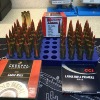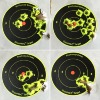Absolutely, I'd guess that you'll average around 10 to 15 loadings at least. I load .308 for gas guns and I can get 7 to 10 times out of Lapua brass with my light loads, with my hot loads I'm lucky to get 5 times out of the brass.
I quit using the paper clip scraper method to check for thinning and I started checking my brass visually with a small pen light. You can actually see the thinning as a hollow inside the brass. When the brass shows thinning around 50% or more of the case then I toss them. This is easy to do with 30 caliber and larger bottle-necked cases but it gets difficult with the smaller calibers.
For the last several years I've been using the tightness of the primer pockets as a flag indicating that the brass is done. In fact, I've come to the point now where I no longer bother looking inside the brass for thinning, culling based on primer fit seems to eliminate the brass before the thinning becomes a problem. I use a .210" diameter pin to gauge the size of the pockets, when the pin fits in the pocket I toss the brass. Using this method I've not had a problem with cracked brass. It also prevents bolt face wear because the primers fit tight enough to prevent flame cutting of the bolt face. I've also found that having consistent primer fits help reduce those unexplained flyers.







